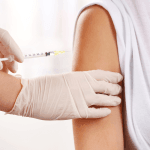In aesthetic medicine, clinicians are continually seeking solutions that enhance skin quality while preserving natural beauty. One of the latest innovations is Karisma, a treatment that offers a biostimulatory approach to revitalizing skin from within.
Developed in Italy, Karisma offers practitioners an effective, biocompatible solution to enhance elasticity, hydration, and firmness. In this article, we’ll explore how Karisma injection works, its key ingredients, treatment benefits, and why it’s becoming a preferred choice among aesthetic professionals.
What Is Karisma?
Karisma is a collagen biostimulator and skin revitalization treatment that works at the cellular level. It combines high-molecular-weight hyaluronic acid for hydration, type I recombinant collagen for dermal support, and carboxymethyl cellulose (CMC) as a stabilizing agent.
Unlike traditional dermal fillers that focus on volumizing, Karisma rejuvenates by improving the quality and density of the dermis. The collagen used is produced using recombinant technology, ensuring purity, biocompatibility, and the absence of animal-derived components. This guarantees minimal immunogenic risk and excellent tolerability for all skin types.
The Science of Karisma: How It Works
Karisma’s unique mechanism relies on the interaction of its three active components:
- Hyaluronic Acid (HA): Provides immediate moisture retention and elasticity by binding water within the dermis.
- Type I Recombinant Collagen: Acts as a structural framework that encourages fibroblast proliferation and the synthesis of new collagen fibers.
- Carboxymethylcellulose (CMC): Supports product stability and gradual diffusion, ensuring consistent skin remodeling over several weeks.
Together, these components trigger dermal regeneration through bio-restructuring, enhancing skin texture and elasticity while maintaining a natural appearance.
Clinical Indications and Patient Selection
The Karisma collagen injection is suitable for both preventive and corrective skin care protocols. Ideal candidates include patients experiencing early signs of aging, mild to moderate wrinkles, or loss of elasticity.
Common treatment areas include:
- Face and jawline: Improves texture, tone, and firmness.
- Neck and décolleté: Restores thin, crepey skin.
- Periorbital and perioral areas: Reduce fine lines and enhance skin resilience.
- Hands and arms: Improves hydration and minimizes visible aging.
Due to its non-volumizing, biocompatible formula, Karisma can be safely used by patients seeking natural enhancement without causing drastic facial changes.
Karisma Points and Technique for Injection
The Karisma injection points are distributed across the treatment area using micro-aliquots injected intradermally. This allows for even diffusion and targeted biostimulation.
Key points for the Karisma face include the malar region, nasolabial folds, jawline, and chin. For the neck, injections are administered in a linear or grid-like pattern. The use of a fine needle or cannula depends on the practitioner’s preference and the patient’s anatomy.
Each session typically involves 2 mL of filler, spaced three to four weeks apart. A complete course usually requires 2 to 3 sessions, followed by maintenance every 6 to 12 months.
Clinical Results and Longevity
Results are progressive, with patients noticing improved skin hydration and luminosity after the first session. Within four to six weeks, elasticity and firmness visibly increase as fibroblast activity intensifies.
Clinical trials have reported that over 90% of patients experience measurable improvement in dermal elasticity after two sessions. The results of Karisma injection before and after reveal a smoother texture, enhanced tone, and a refreshed complexion, all without altering natural facial contours.
The benefits of Karisma typically last 9 to 12 months, depending on the patient’s age, skin quality, and lifestyle.
Safety and Biocompatibility
Karisma’s safety profile is one of its greatest strengths. Its recombinant type I collagen eliminates risks associated with animal or human-derived collagen, such as allergic reactions or inflammatory responses. Reported side effects are mild and transient, including minor redness or swelling at the injection site, which typically subsides within 24 to 48 hours.
Because it does not contain cross-linked HA or synthetic fillers, the likelihood of delayed nodules, migration, or foreign-body reactions is minimal. Karisma’s smooth integration within the dermis ensures uniform biostimulation without clumping or lump formation.
Comparing Karisma to Traditional Fillers
Traditional fillers are primarily designed to restore volume and sculpt facial contours, whereas Karisma filler takes a regenerative approach, focusing on enhancing skin health and texture.
Here are the key distinctions between the two:
- Primary Action: Traditional fillers add volume and definition, while Karisma stimulates collagen and elastin production for a natural rejuvenation effect.
- Onset of Results: Fillers deliver immediate correction, whereas Karisma produces gradual and progressive improvements over several weeks.
- Duration: Both treatments can last 6 to 12 months, though Karisma’s results often continue to evolve as collagen renewal occurs.
- Treatment Goal: Fillers aim to correct structural loss and deep wrinkles, while Karisma enhances hydration, elasticity, and overall skin quality.
- Best Suited For: Traditional fillers are most effective for restoring facial volume and contour, while Karisma is ideal for patients seeking smoother, firmer, and more radiant-looking skin.
By strategically combining both treatments, practitioners can achieve comprehensive rejuvenation, using fillers to enhance structure and Karisma to promote vitality and long-term dermal health.
Integrating Karisma into Aesthetic Practice
Incorporating Karisma into your clinical offerings enhances treatment diversity and patient satisfaction. Practitioners benefit from:
- Expanded treatment protocols: Complements injectables, lasers, and energy-based devices.
- Predictable results: Minimal downtime with consistent, natural improvements.
- Increased patient loyalty: Patients value subtle rejuvenation that yields visible, long-term benefits.
- Ease of use: Straightforward injection technique with flexible application areas.
Offering Karisma helps position your clinic as a leader in regenerative aesthetics, appealing to a growing demographic seeking natural-looking, science-backed treatments.
Karisma Price and Patient Value
While Karisma’s price varies by region, it offers exceptional value due to its longevity and biostimulatory benefits. Patients appreciate that the treatment improves skin health and quality over time, reducing the need for frequent touch-ups.
For clinics, Karisma treatments are profitable yet accessible, often encouraging repeat bookings for maintenance sessions. Its lasting collagen-stimulating effect enhances both patient satisfaction and clinic reputation.
Combining Karisma with Adjunctive Procedures
Karisma can be combined with other minimally invasive treatments for enhanced outcomes. It pairs well with:
- Botulinum toxin injections to relax dynamic wrinkles.
- PRP or PRF therapy to further boost collagen synthesis.
- Microneedling or fractional lasers for improving tone and texture.
- Traditional fillers for deeper structural correction.
These combination protocols provide a comprehensive anti-aging strategy that addresses both surface texture and underlying dermal quality.
Karisma’s Role in the Future of Regenerative Aesthetics
The shift from artificial enhancement to biological regeneration marks a turning point in modern aesthetic medicine. The collagen technology represents this evolution, focusing on restoring dermal architecture through stimulation rather than substitution.
Ongoing studies continue to explore its role in scar management, post-laser recovery, and body skin tightening. As research advances, Karisma is poised to become a cornerstone in biorestructuring injectables, reflecting patients’ preference for subtle, authentic rejuvenation.
Conclusion
The Karisma injection embodies the future of non-surgical skin rejuvenation: safe, effective, and scientifically advanced. By combining hyaluronic acid, recombinant collagen, and CMC, Karisma enhances elasticity, hydration, and firmness from within.
For medical practitioners, Karisma provides an opportunity to expand service offerings and deliver results that align with modern aesthetic goals, natural, regenerative, and patient-centered.
Ready to learn more or offer this treatment at your practice? Visit our Karisma Product Page to explore detailed product specifications, formulation insights, and ordering information. Discover how Karisma injections can elevate your clinic’s aesthetic portfolio and deliver long-lasting results your patients will love.
Frequently Asked Questions (FAQs)
Can Karisma help patients with acne scars or post-inflammatory skin damage?
Yes. Karisma’s collagen-stimulating properties can improve the texture of mild to moderate acne scars by promoting dermal remodeling. Over a series of treatments, patients often notice smoother and more even skin tone as new collagen fibers replace damaged tissue. This regenerative effect makes Karisma a versatile option for patients seeking both rejuvenation and corrective aesthetic improvements.
How does Karisma differ from collagen supplements or topical products?
Unlike oral or topical collagen, which are limited by poor absorption and minimal dermal penetration, Karisma delivers recombinant collagen directly into the skin. This ensures precise stimulation of fibroblasts and enhanced structural regeneration. The result is a more targeted, longer-lasting improvement in firmness and texture.
Is Karisma suitable for male patients?
Absolutely. Men increasingly seek treatments that improve skin quality without noticeable cosmetic changes. Karisma is ideal because it subtly enhances hydration and elasticity, offering rejuvenation without altering masculine facial contours. Its natural-looking results make it a preferred choice for male patients who want refreshed, healthier skin without an overly treated appearance.
Can Karisma be used for preventive anti-aging protocols?
Yes. Many younger patients choose Karisma to maintain skin integrity before visible signs of aging appear. Regular biostimulation helps maintain collagen density, delay laxity, and keep the skin resilient against early environmental and oxidative stress.
What post-treatment care should patients follow?
Patients should avoid makeup, saunas, and vigorous exercise for 24 hours after treatment. Hydration and gentle skincare products can enhance results, while sun protection prevents collagen degradation. Mild swelling or redness usually subsides quickly without medical intervention.
Is Karisma compatible with energy-based devices, such as RF or laser treatments?
Yes, it can be integrated into combination therapies at the appropriate time. Typically, Karisma is administered either a few weeks before or after energy-based procedures to optimize tissue response. When sequenced correctly, the synergy improves collagen regeneration and overall skin tone.







